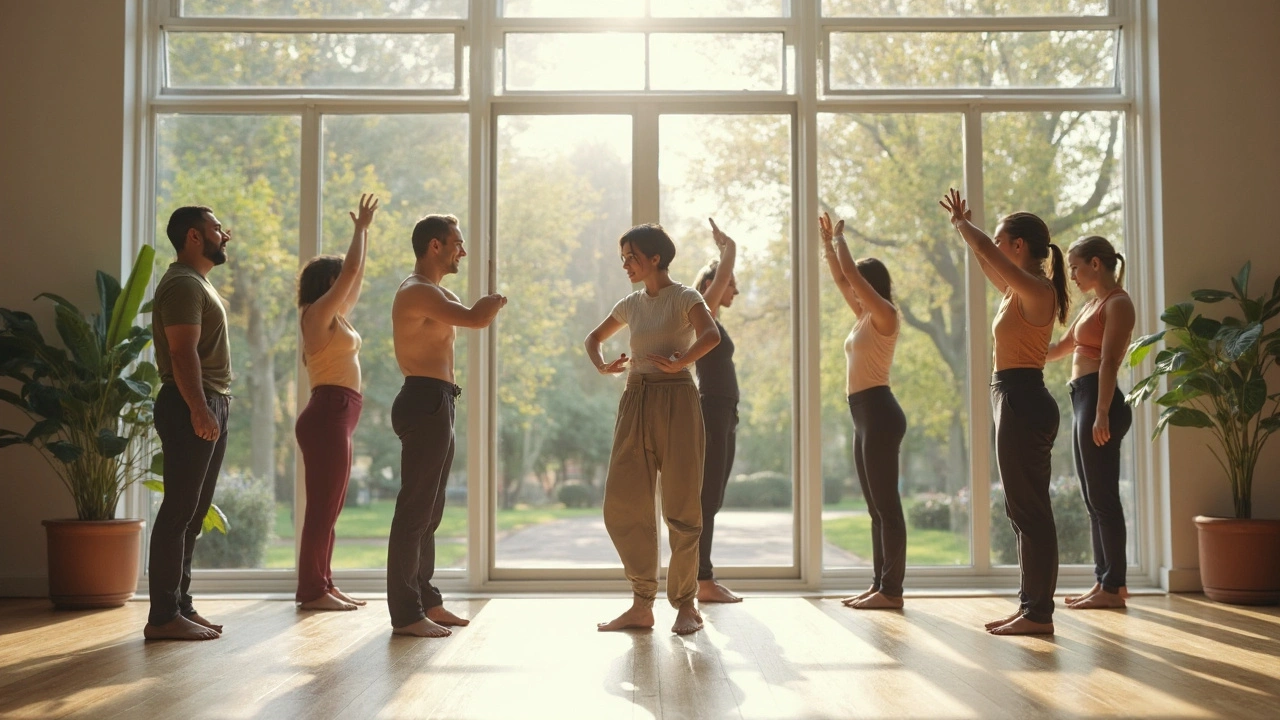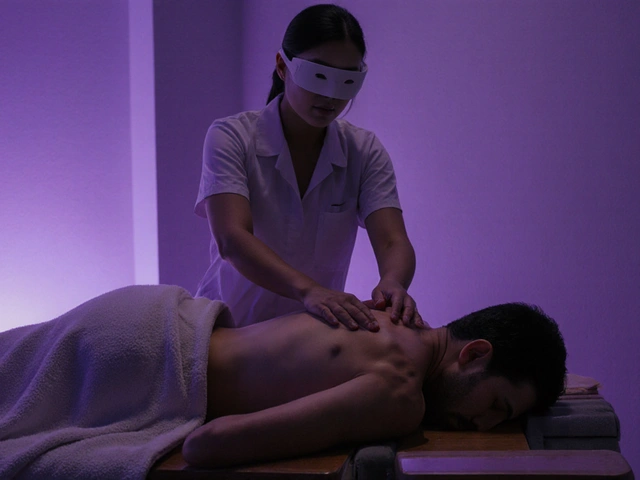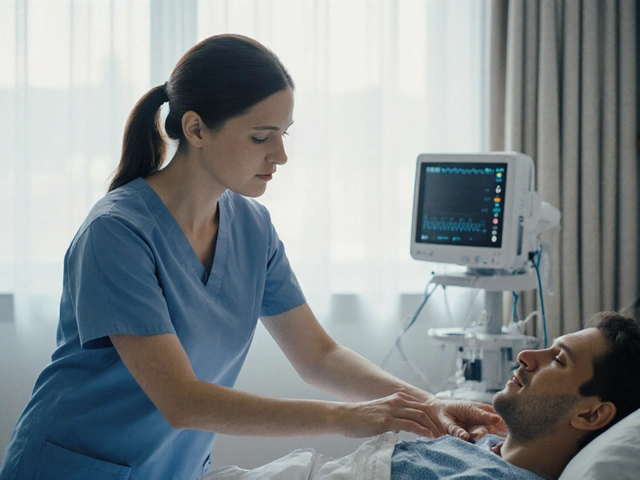Posture: Easy Fixes, Exercises, and Bodywork That Actually Help
Sitting and standing badly wears you down. Poor posture causes pain, less energy, and slower recovery from workouts. The good news: small, consistent changes and a few targeted therapies can flip this fast.
Start with quick daily checks. Every hour, sit up tall—feet flat, ribs over hips, shoulders relaxed. Do a 30-second chin tuck and a 1-minute doorway chest stretch. Those two moves reduce forward head and rounded shoulders, the most common culprits.
Add two practical habits. First, set your screen so the top third of the display is at eye level; this cuts neck strain. Second, swap long sitting blocks for 20–30 minute work chunks with 2–3 minute standing breaks. Moving often resets tight muscles and reminds you to re-align.
Short exercises you can do anywhere
Try these simple routines: 1) Wall angels — stand with your back on a wall, slide arms up and down for 10 reps. 2) Scapular squeezes — sit tall, pinch shoulder blades together for 10 seconds, repeat 8 times. 3) Hip flexor stretch — kneel on one knee, drive hips forward for 30 seconds each side. Do the set twice a day and you'll feel less stiffness in weeks.
If you prefer guided work, look at Feldenkrais and Hellerwork. Feldenkrais uses gentle, mindful movements to retrain how you hold yourself; many people find it improves flexibility and body awareness. Hellerwork focuses on deeper structural alignment and can change how you stand over several sessions. Both aim for lasting changes, not just temporary relief.
Bodywork choices and what to expect
Massage forms like trigger point therapy, Amma, and warm stone massage tackle tight spots that pull you out of alignment. Ortho-Bionomy and gentle approaches work with your body’s reflexes to release chronic patterns without force. If pain limits your movement, palliative or therapeutic massage can ease symptoms so you can start corrective exercises.
When to see a pro? If pain is sharp, worsening, or comes with numbness, get medical advice first. For ongoing stiffness or posture that won’t improve with consistent home work, seek a therapist who understands structural bodywork—look for Feldenkrais, Hellerwork, or certified Ortho-Bionomy practitioners. Ask about session goals and a home plan.
Tools and a plan help. Invest in an ergonomic chair or lumbar roll for lower-back support. A sit-stand desk makes it easier to break long sitting stretches. Set one simple goal: three short exercise sessions daily and a 10-minute posture check each evening. Track pain and movement in a notebook or phone so you can spot real progress. If pain stays or worsens after six weeks, ask your clinician about testing or a specialist referral.
Small wins add up. A few daily stretches, better screen height, and one or two targeted bodywork sessions can change posture and ease pain. Pick 2 habits you’ll actually keep and try them for four weeks. If you want, check our linked articles on Feldenkrais, Hellerwork, trigger point techniques, and Amma massage for step-by-step guides and real-world tips.

Rolfing for Scoliosis: Real Relief for Stubborn Back Pain
This article dives into how Rolfing can help people living with scoliosis by improving posture, reducing pain, and making daily life more comfortable. You'll discover what Rolfing actually is, how it works, and whether it's safe. Get practical tips for finding a qualified Rolfer, learn about what sessions feel like, and see real results reported by those who've tried it. It's packed with down-to-earth advice for anyone tired of letting scoliosis rule their lives.

Rolfing: A Revolutionary Approach to Body Alignment That Could Change How You Feel
Rolfing is a hands-on method for improving body alignment and movement, offering a fresh take on chronic pain relief and posture issues. This article breaks down what Rolfing actually is, how it works, and who might benefit from it. It also gives real tips on what to expect before trying it. If you’ve tried everything from massages to physical therapy with little luck, Rolfing could be exactly what you need. Find out why this approach is gaining traction for people who want lasting change.
Categories
- Health and Wellness (148)
- Alternative Therapies (86)
- Massage Therapy (40)
- Travel and Culture (15)
- Beauty and Skincare (9)
- Holistic Health (8)
- Health and Fitness (5)
- Spirituality (5)
- Other (2)
- Personal Development (2)
Popular Articles

The Esalen Experience: A Journey Beyond Ordinary
Nov, 25 2023


